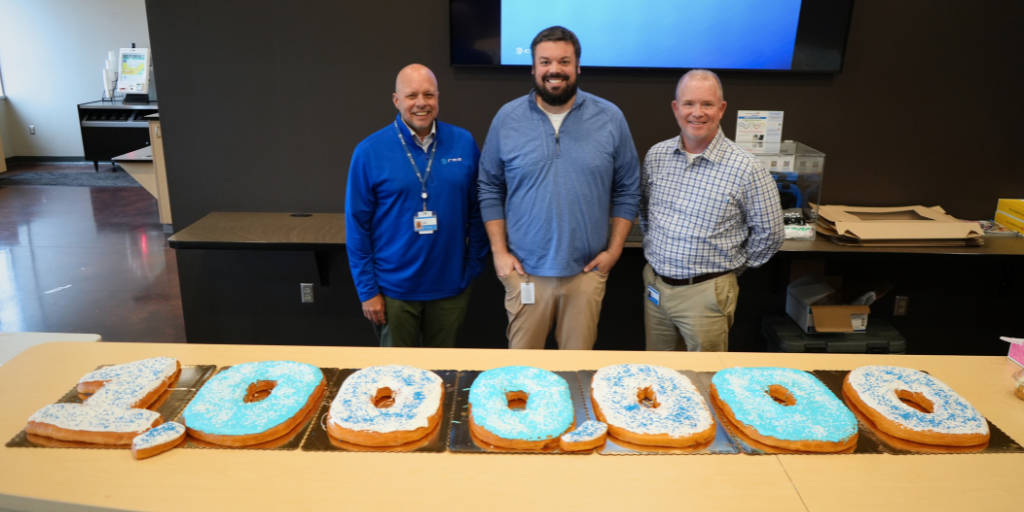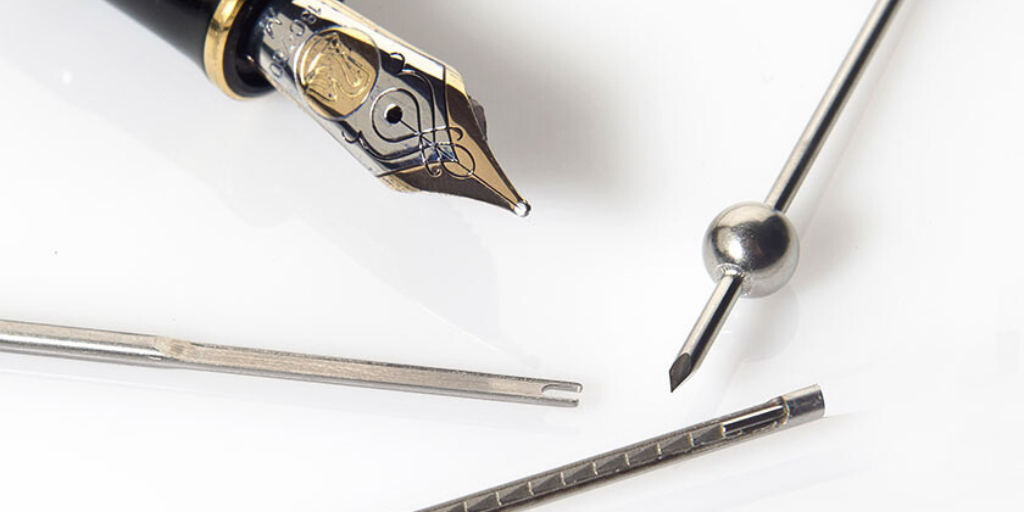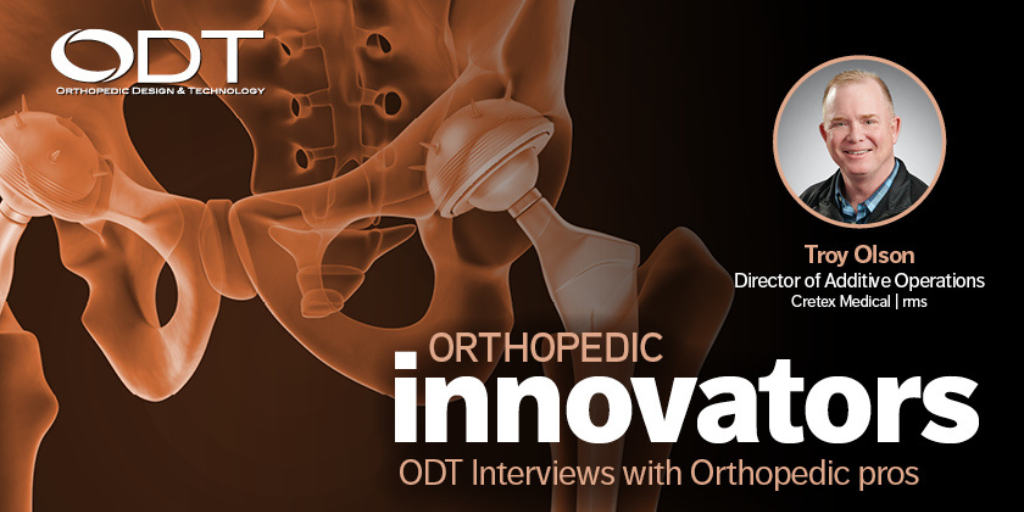Medtronic Launches Proprietary Surface Technology on AM Devices
Medtronic became interested in additive manufacturing (AM) to extend its innovation, unlocking advantages exclusive to the technology.
by 3D Systems | November 2, 2020
Cretex Medical customer, Medtronic, was featured in BONEZONE Magazine.
Medtronic became interested in additive manufacturing (AM) to extend its innovation, unlocking advantages exclusive to the technology. Specifically, Medtronic saw an opportunity to advance its portfolio of spine products through titanium 3D printing. The Adaptix™ Interbody System by Medtronic is the first 3D-printed navigated titanium implant that takes advantage of Titan nanoLOCK™ Surface Technology. The nanoLOCK innovative proprietary surface technology is designed to increase the total surface area of interbody fusion devices for a higher number of bone growth opportunities. This is done through a blend of surface textures on the macro, micro and nano levels.
The path to Medtronic’s AM innovation created two challenges for the company. The first was securing FDA clearance for new technology in its portfolio. The second was identifying how to build on this legacy product by integrating AM into its workflow.
According to Keith Miller, a Senior Distinguished Engineer working in product design and development in Medtronic’s Spine Unit, this was when 3D Systems came into the picture. Medtronic Spine’s operations group selected the additive manufacturing solutions company as its preferred 3D printer supplier based on both metal print quality and customer service. Miller said that 3D Systems’ support was pivotal in helping Medtronic grasp the nuances of 3D-printed products in the regulatory space.
Additive Manufacturing Regulatory Help
Medtronic was preparing an FDA 510(k) submission for its first in-house developed AM product when experts from 3D Systems Application Innovation Group (AIG) stepped in to offer guidance based on their experience supporting FDA clearances and CE Marks on over 85 devices. 3D Systems AIG is a global resource equipped with the knowledge and technology to support additive manufacturing applications in healthcare and other markets. The AIG can advise and assist on projects at any stage, from application development and frontend engineering to equipment validation, process validation, part qualification and production.
Although the Adaptix™ Interbody System is produced using 3D Systems solutions, Medtronic’s prior FDA 510(k) submission for a 3D-printed product used a competing technology. “Despite [that fact], 3D Systems took the time to help us and build a relationship,” Miller said. “This project was my first indication of how much customer service means to 3D Systems. By now, I’ve seen this time and time again: the people at 3D Systems go out of their way to help us all the time.”
Following 3D Systems’ guidance on Medtronic’s first FDA submission for a 3D-printed device, Miller said that Medtronic’s Spine Unit has the confidence it needs for future submissions and has not encountered any significant obstacles in getting 3D-printed products cleared to date.
Additive Manufacturing Integrated Solutions
Medtronic has integrated a complete AM solution comprising a DMP (direct metal printing) machine, software and materials with optimized laser parameters. Miller said this solution approach is another advantage of working with 3D Systems. “You don’t have to do too much experimentation to figure things out,” Miller said. “You pretty much know the different components are going to work seamlessly together.” With products as sensitive in nature as implanted medical devices, this reliability is important. The final production is also done on 3D Systems DMP machines via RMS in Minneapolis, a 3D Systems certified partner.
Medtronic’s family of interbody fusion devices, both on the market and under development, includes more than 250 different sizes, each featuring the complex surfaces intrinsic to Medtronic’s proprietary surface technology. Taking the quantity and sophistication of these designs into consideration, any opportunities to save time in design and development were welcome. For this reason, Miller said 3D Systems 3DXpert® software is key.
3DXpert is an all-in-one additive manufacturing software that includes tools designed specifically for the additive manufacturing process and traditional CAD capabilities. It can handle complex features and has a wide range of process customization features that help users advance their designs faster while reducing opportunities for errors. Tools for process customization include the ability to make templates for repeated operations, for which Miller estimates a time savings of roughly 60% to 70%. “Rather than repeating the same operations over and over, templates make the process quicker and less prone to mistakes,” Miller said.
Simulating builds also enables customization, allowing users to prescribe their own stress scale, making it easier to identify application-specific issues. Miller said that this feature can cut up to 50% off the time from confirming a design. “I can’t imagine designing a complex part without performing build simulation on it,” Miller said. “It’s tremendously helpful in understanding the stresses and deformations that are occurring.” 3DXpert enables direct modeling, facilitates adding preset or customizable lattice structures and support structures, and allows part labeling, among other capabilities and features.
Additive Manufacturing In-House
Prior to purchasing its own printer, Medtronic relied on a supplier to print parts as needed. The company opted to bring its manufacturing in-house to better control process development.
“Until you have 3DXpert and your own printer, you’re never going to become knowledgeable on 3D printing. The knowledge you gain from experience is difficult to teach,” Miller said.
He added that the ability to print parts in-house has been instrumental, allowing Medtronic to produce prototypes approximately 75% faster, as well as conduct print tests to analyze new geometries. “There’s no way we could solve the problems we’re solving if we didn’t have our own machine,” he said.
Now that it has cleared the hurdle of introducing another AM product, Medtronic is on the path to increased innovation. “I can’t thank 3D Systems enough for its help. Everyone I have worked with at the company has gone above and beyond to make the adoption of additive technology seamless,” Miller said. “I’m looking forward to our continued partnership.”
This article originally appeared in BONEZONE Magazine.



